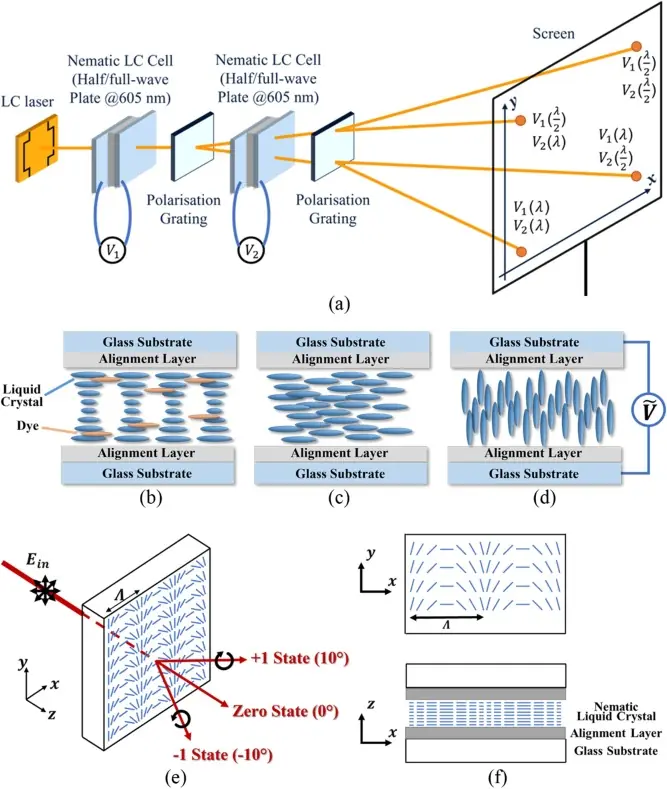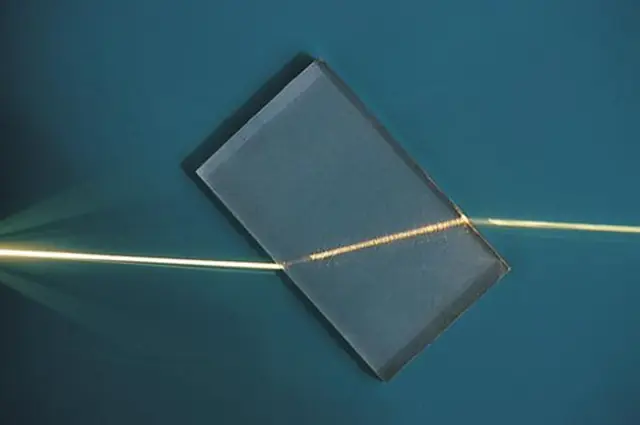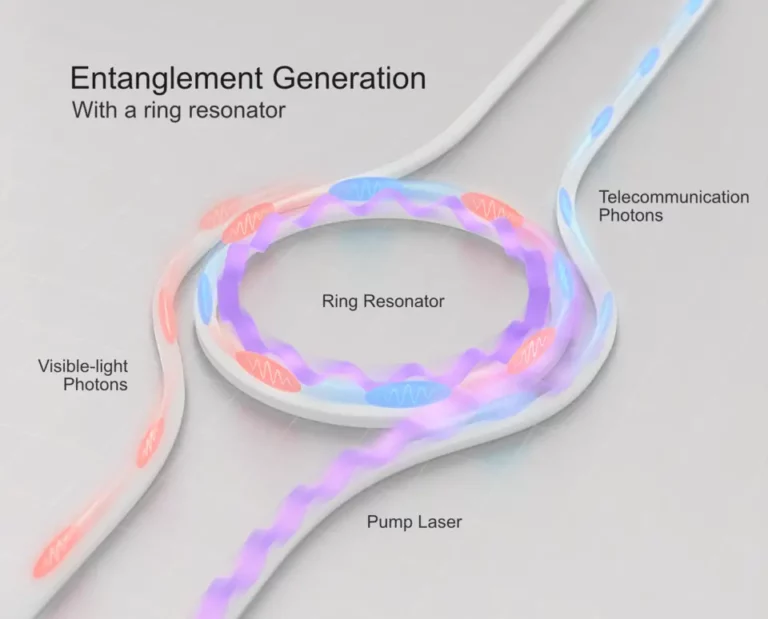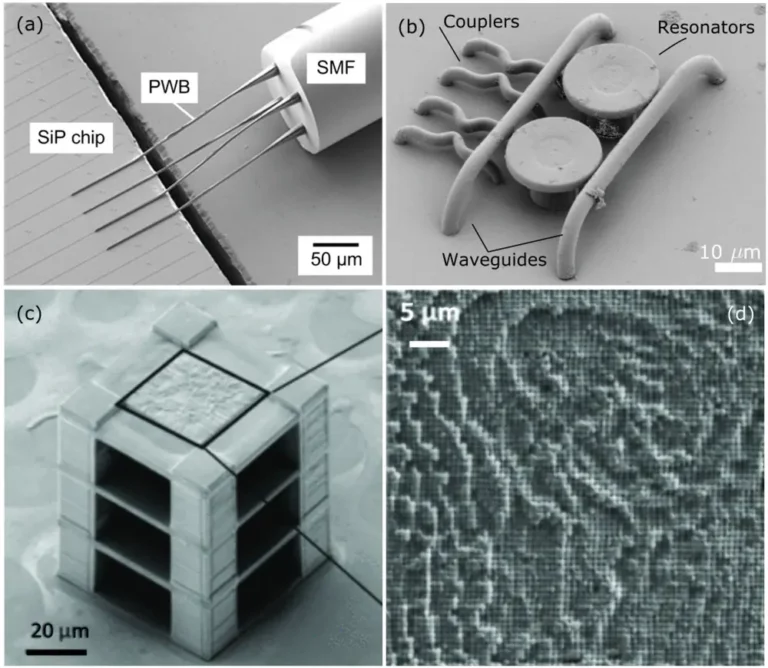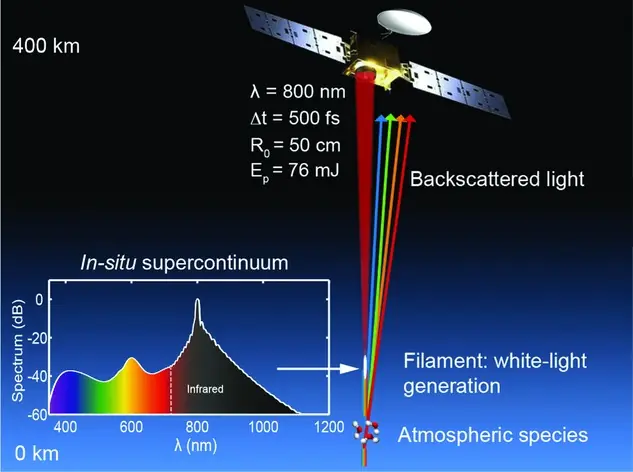Breaking Through the Clouds: Laser Filaments Enable Free-Space Optical Communication in Adverse Weather Conditions
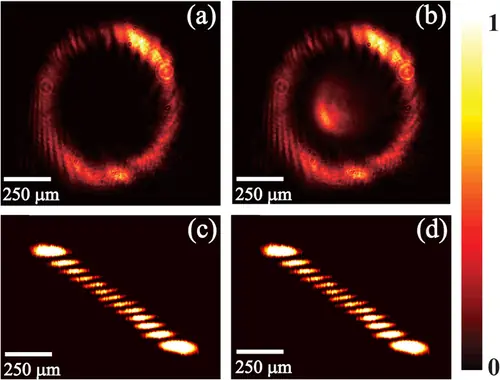
Free-space optical communication (FSO) has the potential to revolutionize the way we transmit information wirelessly, but its efficacy is often limited by dynamic media like atmospheric clouds and fog. These obstacles can form formidable barriers to the propagation of light signals, leading to significant signal loss and disruption. To address this problem, researchers have proposed using laser filaments coupled with a donut-shaped signal beam, which exploits the acoustic properties of the filament to create a clear channel through the cloud.
Generating and coupling the Laser filaments and signal beams
To test the feasibility of this approach, the researchers used an ultrafast laser to generate laser filament accompanied by an acoustic wave that cleared a cylindrical chamber around the plasma column. They then coupled a Laguerre–Gauss (LG) beam through the obstacle-free channel, creating a structured light signal that could potentially carry information through the cloud. The experimental setup was designed to simulate dense cloud conditions, and the team used high-speed cameras to capture images of the transmission process.
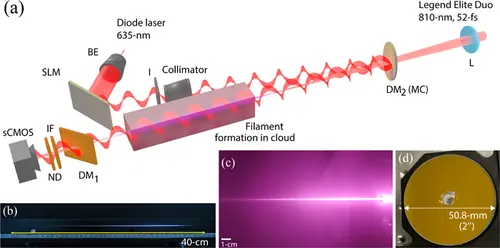
Efficient transmission through cloudy conditions
The results of the experiment were promising, with the team demonstrating an efficient method for FSO through cloudy conditions that requires low energy, is resilient to noise, and is unaffected by the filament. By measuring the topological charge in the air and through the cloud, the team showed that the orbital angular momentum of the structured light carrying the signal was conserved. These findings suggest that the proposed method has the potential to create robust FSO communication systems that can compensate for losses induced by difficult weather conditions. However, further research is needed to explore the full potential of this approach and its limitations in real-world scenarios.
Implications for FSO communication systems
The proposed method of structured light signal transmission through clouds has significant implications for the development of robust FSO communication systems. Currently, weather conditions can cause significant losses in FSO communication systems, leading to reduced data transfer rates and increased signal noise. By using a laser filament coupled with a donut-shaped signal beam, this study demonstrates a highly efficient method of transmitting signals through dense clouds with low energy requirements and resilience to noise. This approach has the potential to revolutionize FSO communication systems, making them more reliable in adverse weather conditions.
However, there are limitations to this method that need to be addressed. The current experiment was conducted on a laboratory scale, and more research is needed to assess the feasibility of scaling it up for practical applications. Additionally, the effects of wind and turbulence need to be studied, as they can significantly affect the transmission of structured light signals through clouds.
Laser Filaments Offer Promising results for future FSO communication systems
The results of this study provide promising evidence for the development of robust FSO communication systems that can operate in adverse weather conditions. The method of coupling laser filaments with a donut-shaped signal beam to create a stationary high-speed communication channel has been demonstrated on a laboratory scale to be highly efficient, low-energy, and resilient to noise. Furthermore, the conservation of the orbital angular momentum of the structured light carrying the signal means that the method can be used for long-distance communication without the need for repeaters or amplifiers. With further research and development, this approach could revolutionize FSO communication systems and provide a reliable alternative to traditional communication methods.

